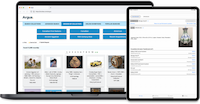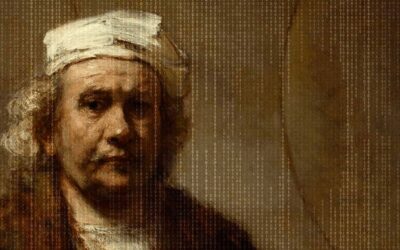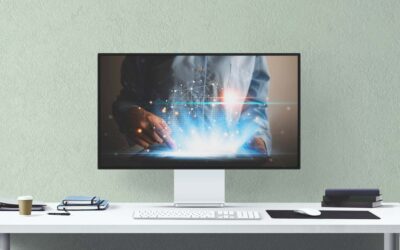What Funders Look for in Museum CMS Projects

Rachael Cristine Woody
Seeking funding in the museum field can feel like a mysterious process—especially if you are newer to the fundraising effort.
What do funders want to fund? And, what do they look for in applications? It can be even more daunting if you’re seeking funding for work that involves the museum Collections Management System (CMS). This post will outline what funders look for and offer guidance on the type of detail you should include for each area.
If you’re still searching for a CMS project idea, please refer to last week’s post: How to Identify Museum CMS Projects for Funding.
What Funders Look For
When considering museum CMS projects for potential funding, it’s helpful to think through what funders look for when evaluating applications. While each application is different, there are some universal items you can depend on and should always be prepared for:
- A Compelling Story
- Proof of Concept
- Clearly Defined Activities
- Clearly Defined Costs
- What Else You’ve Done
- Reference to Best Practices
A Compelling Story
Every fundraiser will tell you that a compelling story is the first element every good application needs. This is especially important when you consider the project itself can be dry and heavily technical. Not every reviewer will know exactly what you’re describing, but what they can understand is a good story. That’s not to say you shouldn’t include the technical aspects—these are important too—but before you go technical you need to weave a compelling narrative.
Proof of Concept
Given the technical aspect of a CMS project, it is important to demonstrate that the technical and process aspects you’re proposing are sound and based in reality. While funders may not explicitly require a “proof of concept” you should absolutely include an explanation of how you’ve constructed and tested the project idea and all of its elements. This information helps to persuade funders that you know what you’re doing.
Clearly Defined Activities
Museum CMS projects often include many different elements, from digitization, to data creation, to CMS uploading or data migration, etc. As there can be multiple steps, it’s important to spell out project activities and how they interconnect or flow into one another. The better the activities are defined, the easier it is for funders to assess whether or not the budget matches the project.
Clearly Defined Costs
Funders want specifics when it comes to cost. If you’re acquiring equipment, you should have examples with current retail value, vendor price sheets for contracted work, and/or proposals from consultants. Funders will want to see real and actual numbers so that they can feel confident in the amount of money you’re requesting. Note: It’s just as likely to underestimate the money needed as it is to overestimate. When it comes to grant funding, you don’t want to find yourself in either scenario!
What Else You’ve Done
Technical projects are a more advanced project type and require expertise. Funders will want to know what work you’ve completed previously in order to assess whether or not you’re capable of executing the project you proposed.
Reference to Best Practices
Finally, it’s important to reference any and all best practices for the various project aspects where best practices are present. Funders—and especially museum funders—are aware of best practices and will expect to see references to them. If no best practices are cited then it’s a red flag for reviewers as they can’t be sure you’ll execute the project correctly.
Conclusion
Now that we’ve covered what funders look for in a CMS project application, we’ll review the information to include for an attractive museum CMS project. Please join us next week as we outline specific information to include in the proposal to further bolster your chances for application success.
Additional Grant Funding Resources
- A Survivor’s Guide to Museum Grant Writing (e-book): https://lucidea.com/grant-writing-ebook/
- Lucidea Grants Directory: https://lucidea.com/grants-directory/
- Lucidea Grants Workbook & Templates: https://lucidea.com/grants-directory/grants-workbook-and-templates/
- Webinar Suite: https://lucidea.com/project_category/rachael-woody-webinars/
Additional Reading

Rachael Cristine Woody
Energized by this post? Please join us for the companion webinar How to Construct Museum CMS Projects that Attract Funding, August 28, 2024 at 11 a.m. Pacific, 2 p.m. Eastern. (Can’t make it? Register anyway and we will send you a link to the recording and slides afterwards). Register now.
**Disclaimer: Any in-line promotional text does not imply Lucidea product endorsement by the author of this post.
Never miss another post. Subscribe today!
Similar Posts
No-Code Digital Storytelling Example: Rembrandt’s Self-Portrait at Kenwood House
Explore how English Heritage’s Kenwood House uses the no-code platform Shorthand to bring Rembrandt’s Self-Portrait with Two Circles to life through visual storytelling and interactive design.
Exploring No-Code Digital Storytelling: Hoover’s “Fanning the Flames” Exhibit
Explore no-code digital storytelling with Hoover’s ‘Fanning the Flames’ exhibit. See how interactive tools (Deep Zoom Color Compare & Hot Spot) enhance user engagement and the visual experience.
An Introduction to Scrollytelling for Museums
Discover how museums use scrollytelling and digital storytelling platforms to create immersive narratives. This introduction explores key concepts and approaches to interactive storytelling.
Exploring Self-Determinate Multiple Pathways: An Example of Digital Storytelling
Discover how self-determinate multiple pathways offer flexible interactive storytelling in museum exhibits. Learn from the Tenement Museum’s ‘Your Story Our Story.’







Leave a Comment
Comments are reviewed and must adhere to our comments policy.
0 Comments